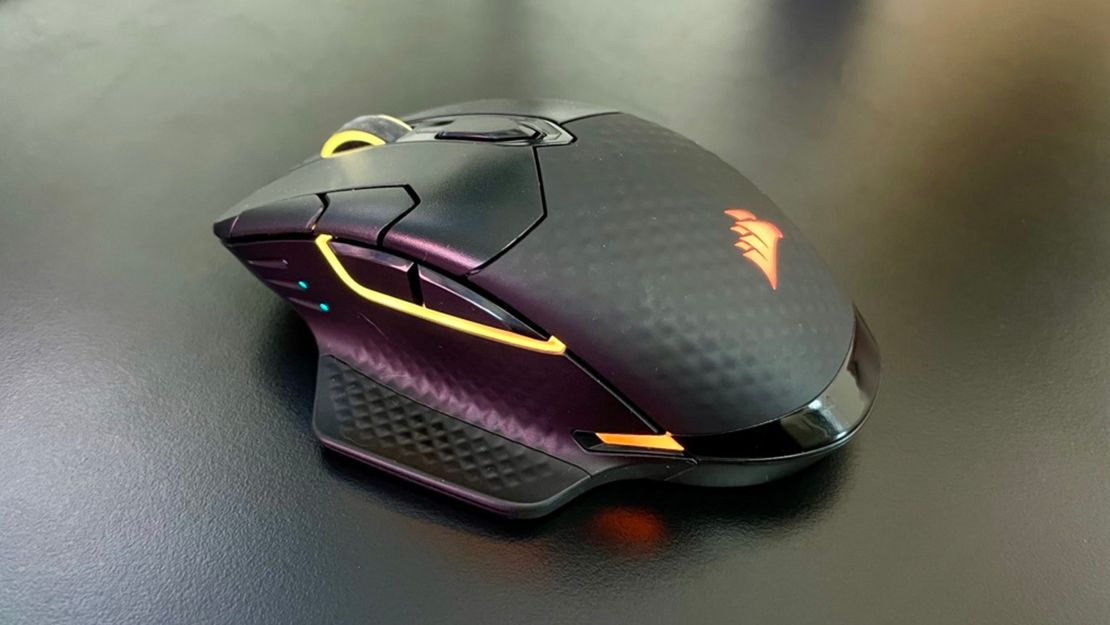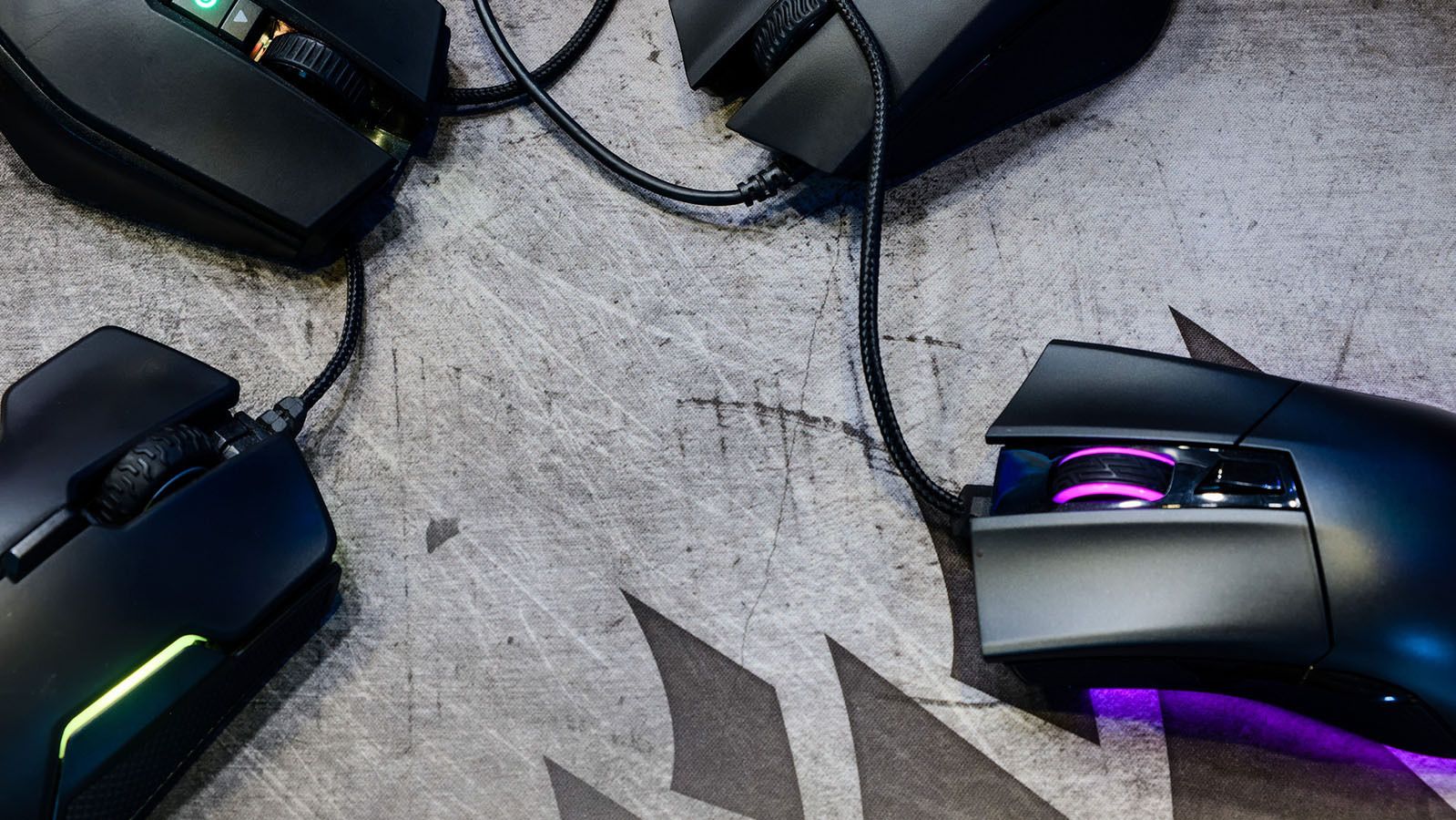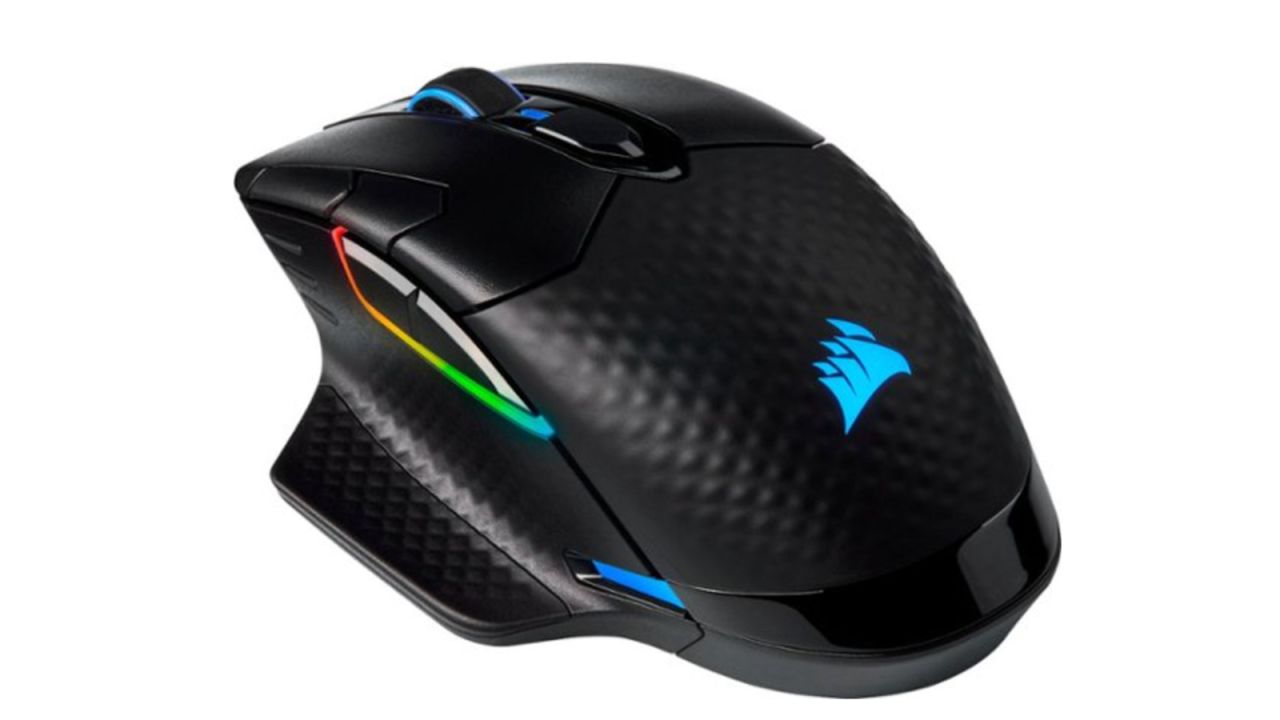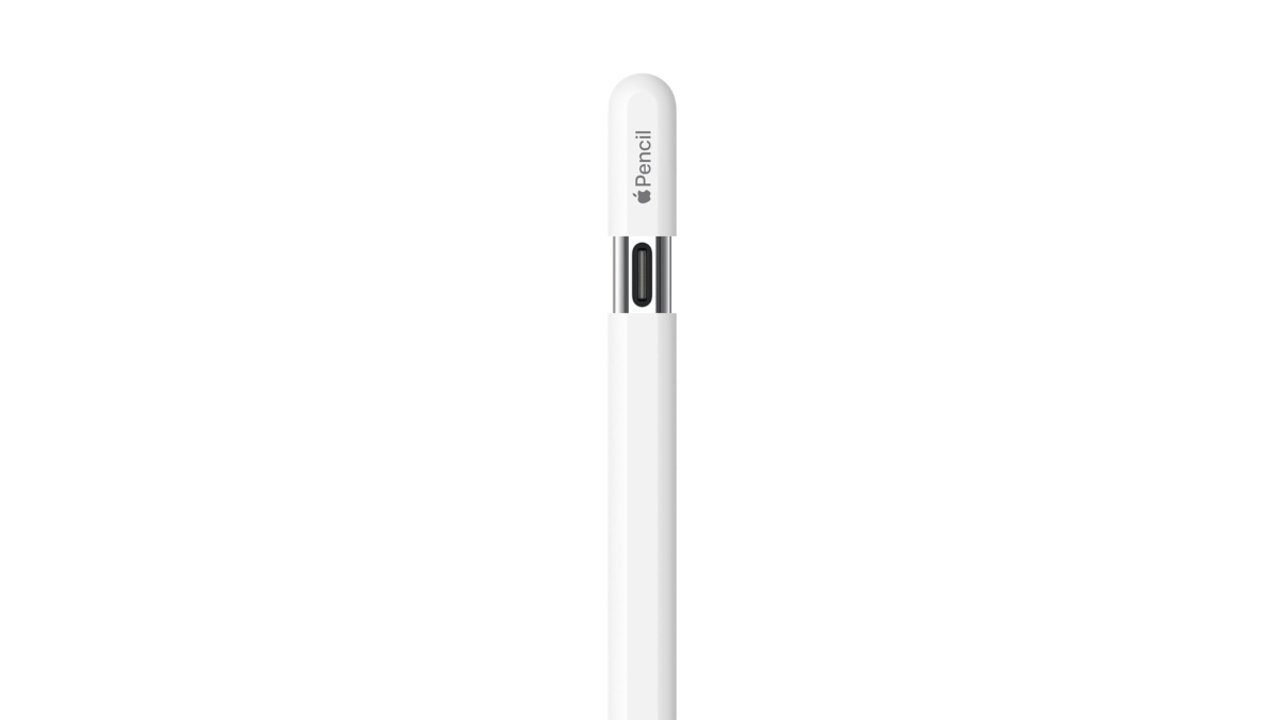A comfortable, fast, reliable, customizable gaming mouse is an important part of any gamer’s setup, and the best gaming mouse also needs to be versatile enough to tackle any task. On our quest to find the best, we spent several months with 14 leading gaming mice playing fast-paced rounds of Call of Duty, scrolling through endless Excel spreadsheets and clicking through annoying Captchas as we tried to buy a Nvidia RTX 3060 Ti graphics card, giving them the mice the same workout we gave gaming keyboards.
In the end, we found one great gaming mouse that stood above the rest, thanks to its affordable price, versatile connectivity options and wide range of features and software customization.
Best gaming mouse overall: Corsair Dark Core RGB Pro Wireless Gaming Mouse
$90 $65 at Best Buy, Corsair and Amazon

After thousands of clicks, swipes and scrolls, the Corsair Dark Core RGB was a clear winner in our testing. The Corsair is a versatile gaming mouse that provides a comfortable grip paired with a scroll wheel and buttons that have a reassuring feel, plus you can use it wired, via Bluetooth or over Corsair’s Slipstream high-speed 2.4GHz wireless connection.
The RGB Pro includes a USB-A to USB-C cable, which is used to charge the internal battery of the mouse and act as a wired connection to your computer. This way, you can have a true zero-latency experience. Option two is a tiny USB dongle that directly connects the mouse to your PC via a 2.4GHz connection. This dongle uses Corsair’s proprietary Slipstream wireless tech, which has a sub-1-millisecond wireless speed. That means it’s constantly communicating with the dongle that’s plugged into the USB port on your computer, letting it know exactly what you’re doing with the mouse. Finally, if you don’t have a spare USB port, you can connect the mouse via Bluetooth. You’ll get better gaming performance using either a wired or 2.4GHz connection, but having a fallback option of Bluetooth is a welcome feature.
The three-pronged approach is really handy and allows you to have a few layers of redundancy. This way, if one form of connectivity fails, you have another to continue that match in Fortnite or finish up that work in a spreadsheet. In comparison to the other mice we tested, the RGB Pro wasn’t alone in offering three different connection options, all of which are reliable and relatively issue-free. However, we experienced less interference with the Corsair when connected to our Mac, giving it a slight edge over the competition. As an added bonus, the RGB Pro uses a USB-C connection, allowing you to use the cable to sync data or charge other devices when not in use.
At 133 grams, the RGB Pro is one of the heavier mice we tested. This is one of those areas that’s strictly personal preference, but we preferred the added weight of the RGB Pro over Logitech’s G Pro X Superlight gaming mouse that weighs less than 63 grams. The heavier design of the RGB Pro not only makes the mouse feel sturdier, like it can take the repeated bashing of its buttons, but it also provides some resistance when moving the mouse, which leads to more accurate movements, instead of overshooting a target because of how easy it is to move.
Along with a strong base, the RGB Pro has a very versatile design. On the left side of the mouse is a permanent side grip that acts as a ledge to rest your thumb on. Out of the box, the right side of the mouse is flat, without a grip. However, you can remove the small plate (which is also where the Slipstream USB dongle is kept), and replace it with another side grip.
There are a total of eight programmable buttons that you customize using Corsair’s iCue software (available for Mac or PC). Eight buttons sit right in the middle of the pack compared to other mice we tested (the Logitech G502 has 11 programmable buttons, for instance, which can be overwhelming). There are two buttons on the left side of the housing, another two buttons just to the left of the standard mouse button. There’s another button just beneath the scroll wheel that’s used to change between DPI (dots per inch) settings, and, of course, there’s the right-click button. The left and right click buttons have a 50 million click rating — basically meaning it’ll last you a good few years.
There’s a somewhat steep learning curve to iCue, especially when it comes to creating custom actions for buttons (like launching a password manager, or setting a button to view your map or heal in a game), but once you get the hang of it, you’ll be able to create and set multiple profiles with ease. You can save three different lighting and macro profiles on the mouse. Logitech’s G Hub is easier to get up and use, while Razer and SteelSeries are in line with Corsair, in that they have a steep learning curve, but offer the ability to create profiles, change lighting and alter what each button on the mouse does.
Now since this is a gaming mouse, there are of course customizable lights built in. There are nine different RGB lighting zones you can tailor to fit your mood or gaming session. You can fully customize the color and lighting pattern of the lights, or pick from some of iCue’s default lighting themes. You can even create custom profiles for specific apps or games, changing the lights (or turning them off) when you’re watching a movie or gaming.
Battery life will vary based on whether you’re using a Slipstream dongle connection or Bluetooth along with if lighting is engaged. Corsair estimates battery life of 16 hours with lighting on or 36 hours with lighting turned off when connected via the dongle. Using a Bluetooth connection, you’ll get 18 hours with lighting on or 50 hours with it off. Those numbers line up with our real world experience. If anything, the estimate for Slipstream with lighting on is on the low side.
Arguably, battery life is the biggest drawback and the only potential detractor from the RGB Pro. Other wireless gaming mice we tested had much longer battery life, with the likes of Razer DeathAdder V2 Pro lasting up to 120 hours. You’ll want to get in the habit of charging the RGB Pro every few nights. We were able to push it through a full week of work with light gaming, so it’s not something you’ll charge every night.
That said, the Corsair Dark Core RGB Pro Wireless is a well-rounded gaming mouse that does a lot of different things and does them well. From its sturdy construction to the pleasant feel of each click, smooth scrolling of the wheel and customization options that truly make it your own, it earned its place as our best overall gaming mouse. Ultimately, at $90, it proves you don’t have to spend a ton to get a high-quality gaming mouse.
How we tested
After deciding on our testing pool from user reviews, new launches and our expertise, we got to testing 14 different gaming mice. Testing started the moment we unboxed them, noting whether all the necessary peripherals were included and how clear the instructions were. With many of these, the setup didn’t end with just plugging the mouse into the computer, so we also looked at customizations around button assignments and even companion software.
These applications, available for Mac and Windows alike, provide users with an easy way to customize the mouse, including everything from macros, aka shortcuts, to fun and colorful lighting on the mice that support RGB coloring.
We also paid close attention to the connectivity provided. Did the mouse feature 2.4GHz, wired or Bluetooth for easy pairing, or did it stick with a single hardwired experience?
Most importantly, though, we scored the overall experience through a range of tests that spanned gaming, scrolling, clicking, selecting and other daily-use tasks. We tested for comfortability while in use along with accuracy and the feel of the mouse.
Lastly, we examined what was covered in the included warranty and how long it lasted.
How we rated
Below you’ll see our core categories and subcategories used for scoring.
- Clicking experience had a maximum of 50 points: overall (20 points), tactile (10 points), feel in-game/everyday (10 points) and speed (10 points).
- Software had a maximum of 20 points: overall (20 points).
- Buttons had a maximum of 15 points: overall (15) points.
- Setup had a maximum of 15 points: overall (15 points)
- Connectivity had a maximum of 10 points: overall (10 points).
- Warranty had a maximum of 10 points: overall (10 points).
Others we tested
Corsair Katar Pro
$50 at Corsair
The Corsair Katar is attractive for its price, and for the fact that it’s a wireless mouse. It’s similar to the Logitech G305 in that it’s powered by an AA battery that will last around 135 hours of use with a Corsair Slipstream wireless connection. It has a max DPI of 10,000, so don’t expect to have insane speeds, but it should be more than fast enough for FPS gaming. There’s a single RGB zone that you can customize using Corsair’s iCue software. At $50, it’s a fine mouse that will surely get the job done, be it for work or play.
Corsair Harpoon RGB Wireless
$60 $45 at Corsair
The Harpoon RGB Wireless shares a lot of the same features as our top overall pick. It can be used in wireless or wired modes, but has better battery life with 60 hours of expected use via Bluetooth with the RGB light off. You can use Corsair Slipstream, Bluetooth or a wired connection. The Katar and Harpoon have a similar design and are comfortable over long gaming sessions. We liked the Harpoon a lot, but ultimately found the RGB Pro a better pick thanks to more RGB lighting and its overall design.
Logitech G203 Lightsync
$40 From $23 at Amazon; $40 at Logitech
The Logitech G203 is a good affordable option for both gaming and everyday work use, with an ergonomic design and a handy set of buttons that includes two thumb keys and a DPI switch for changing sensitivity on the fly. And like the other Logitech mice we tested, you have lots of options for customizing its RGB lighting and overall functionality via the Logitech G Hub app for both Windows and Mac. We think it’s one of the better wired mice at this price, but you can also get good wireless options like the Corsair Katar and Logitech’s own G305 at the same cost.
Logitech G305
$60 at Logitech
Logitech’s G305 Lightspeed Wireless gaming mouse is full of features, including the company’s Lightspeed wireless tech. There are four total colors available, six programmable buttons, a 1-millisecond report rate and max DPI of 12,000. Instead of a built-in battery, the G305 is powered by a single AA battery that Logitech estimates will last 250 hours of use. With a few tweaks, you can push that number to nine months. When you remove the cover off the back, you’ll find the battery compartment and the Lightspeed adapter that plugs into your computer. It’s a fine gaming mouse, no doubt, especially if you don’t want RGB lighting and prefer something that’s not black or white.
Logitech G502 Hero
$80 $49 at Amazon
The G502 Hero is one of the most popular gaming mice, and for good reason. It’s full of buttons — 11 to be exact — comes with extra weights you can add or remove based on your preference, and has a max DPI of 25,600. There are plenty of RGB lights on the 502 Hero, which adds to its already stealthy look. The version we reviewed is wired, however Logitech does offer wireless models if that’s a route you want to go. If you’re not sold on any gaming mice we tested, the G502 Hero is sure to make anyone happy. The RGB Pro beat out the G502 simply because of its wireless options and versatile design.
Logitech G Pro X Superlight
$160 $130 at Logitech
If you’re looking for a lightweight, wireless gaming mouse, then the G Pro X Superlight is it. It weighs a very low 63 grams, or just over 2 ounces, and moves incredibly fast because there’s no resistance. The shell has a smooth coating to it that’s comfortable, but almost toy-like. It uses Logitech’s Lightspeed wireless connection tech, has onboard memory for storing profiles, and a total of five programmable buttons. You’ll get a maximum DPI of 25,600, which is incredibly fast. As for battery life, you’ll get around 70 hours of use before you have to charge via the USB port on the front of the mouse. If weight is the most important factor for you, the G Pro X deserves a look —- otherwise our top pick is a better and more affordable mouse.
Razer DeathAdder V2 Pro
$130 $70 at Amazon
Razer makes some fantastic gaming laptops, and its gaming mice are just as impressive. The DeathAdder V2 Pro is one of the bigger gaming mice we tested thanks to its ergonomic design. It fit the mold of our hand almost perfectly, putting giant buttons on the side of the housing right at our thumb tip. There’s a total of eight buttons on the V2 Pro. You’ll get around 120 hours of use out of the battery and it works with an optional dock that charges the battery with your mouse floating in the air. It’s a cool way to show it off and charge it. You can store up to five profiles on its internal storage. Inside the box is a USB connector for Razer’s HyperSpeed Wireless tech. It also supports a wired connection, along with Bluetooth.
Razer Viper Ultimate
$150 $84 at Amazon
The Razer Viper Ultimate has a lot of the same features as the DeathAdder V2, but in a different form factor. Instead of an ergonomic design that’s made specifically for right-handed users, the Ultimate has an asymmetrical design that’s designed for both right- and left-handed users. The Ultimate is rather light, weighing just 74 grams. There’s a total of eight programmable buttons, with two of them on each side of the housing. You’ll still get five memory profiles via onboard storage, but battery life drops to 70 hours. It comes with a charging dock that lights up as you charge the mouse, adding to that RGB gamer look on your desk.
SteelSeries Rival 3 Wireless
$50 at SteelSeries
The SteelSeries Rival 3 has one notable feature that’s sure to catch your attention: 400 hours of battery life from two AAA batteries. Crazy, right? Keep in mind that’s with specialized settings that reduce the polling rate (how often it reports its position to your computer) from 1000Hz to 125Hz and disable all RGB lighting. The scroll wheel has an RGB light that can be used to let you know when something happens in game, or when the battery is running low. You can connect the mouse to your computer using SteelSeries Quantum 2.0 wireless connection (with a dongle), or using Bluetooth 5.0. We liked this mouse a lot, but the lack of a wired connection and more RGB zones is where it fell short.
SteelSeries Rival 5
$60 $48 at Amazon
The Rival 5 has everything you’d want from a gaming mouse, assuming you don’t want a wireless connection. It boasts nine programmable buttons, weighs just 85 grams and has 10 RGB zones you can customize with the SteelSeries Engine app, matching colors to your other RGB-lighted gear or the game you’re currently obsessed with.
Our favorite part of the Rival 5? The way the buttons feel when pressed, courtesy of the Golden Micro switches, which are rated for 80 million presses. The Rival 5 is a well-rounded option for someone who doesn’t want to spend a ton on a gaming mouse but wants a reliable and long-lasting accessory. There’s a reassuring click to them that we didn’t get with any other gaming mice we tested.
SteelSeries Rival 710
$100 $87 at Amazon
The streamlined design of the wired Rival 710 felt great in our hand. But more impressive than that was the built-in OLED screen that provides game stats and notifications at the tip of your thumb. When you combine the screen with tactile alerts on the palm rest, you get an immersive experience — something we never expected from a gaming mouse. What will make the Rival 710 most attractive to some is the ability to swap out parts, like the sensor, the top, back or the sides to fully customize the mouse. It’s a well-rounded offering, and if you’re using a SteelSeries keyboard, this will fit in nicely with your setup.
SteelSeries Prime
$60 $38 at Amazon
The Prime is classified as a Pro Series gaming mouse by SteelSeries, with a more streamlined form factor than the Rival 5. It’s a personal preference, but we prefer the narrower design of the Prime. The Prime doesn’t have any wireless connectivity built in, but you can remove the included Micro USB cable to protect the mouse and connector from getting bent or broken in your backpack when you’re traveling. You’ll get a SteelSeries TrueMove Pro sensor in the Prime, which should be plenty fast and accurate for hobbyist and pro gamers alike. One downside is the lack of buttons — you’re limited to six programmable buttons on the Prime.
SteelSeries Prime+
$80 $54 at SteelSeries
The Prime+ gaming mouse is a respectable upgrade over the standard Prime mouse from SteelSeries. The Prime+ adds a second depth sensor and customizable depth perception for those times you lift the mouse up off your desk. Instead of sensing a fixed lift-off distance, you can adjust the Prime+ to sense distances as close as 0.5 millimeters and as far as 2 millimeters to match your mousing style. On the bottom of the Prime+ is a small OLED display with a button next to it. Pressing that button, you can view and adjust the polling rate, RGB lighting, lift-off distance and CPI settings. The Prime+ also features a removable Micro USB cable while lacking any wireless connectivity. Like the Prime, you get six programmable buttons to craft your preferred setup for gaming.
SteelSeries Prime Wireless
$130 $80 at Amazon
The Prime Wireless is our favorite SteelSeries gaming mouse of the group we’ve tested so far. Its small form factor, combined with 100-hour battery life and Quantum 2.0 Wireless connectivity, makes it super fun and attractive to use. You’ll need to connect the included USB-C adapter (you’ll have to use an adapter if you don’t have USB-C ports available) to your gaming PC in order to facilitate the wireless connection, but once you do, SteelSeries claims there’s zero packet loss. When the battery does start running low, you can get 40 hours of gameplay in just 15 minutes of charging through the USB-C port located at the front of the mouse. There are several profiles built into the mouse, allowing you to switch on the fly by pressing a button on the bottom of the housing. The only thing we’d change about the Prime Wireless? We’d put a compartment in the body of the mouse to hold the wireless adapter. It’s only a matter of time before we lose it.













